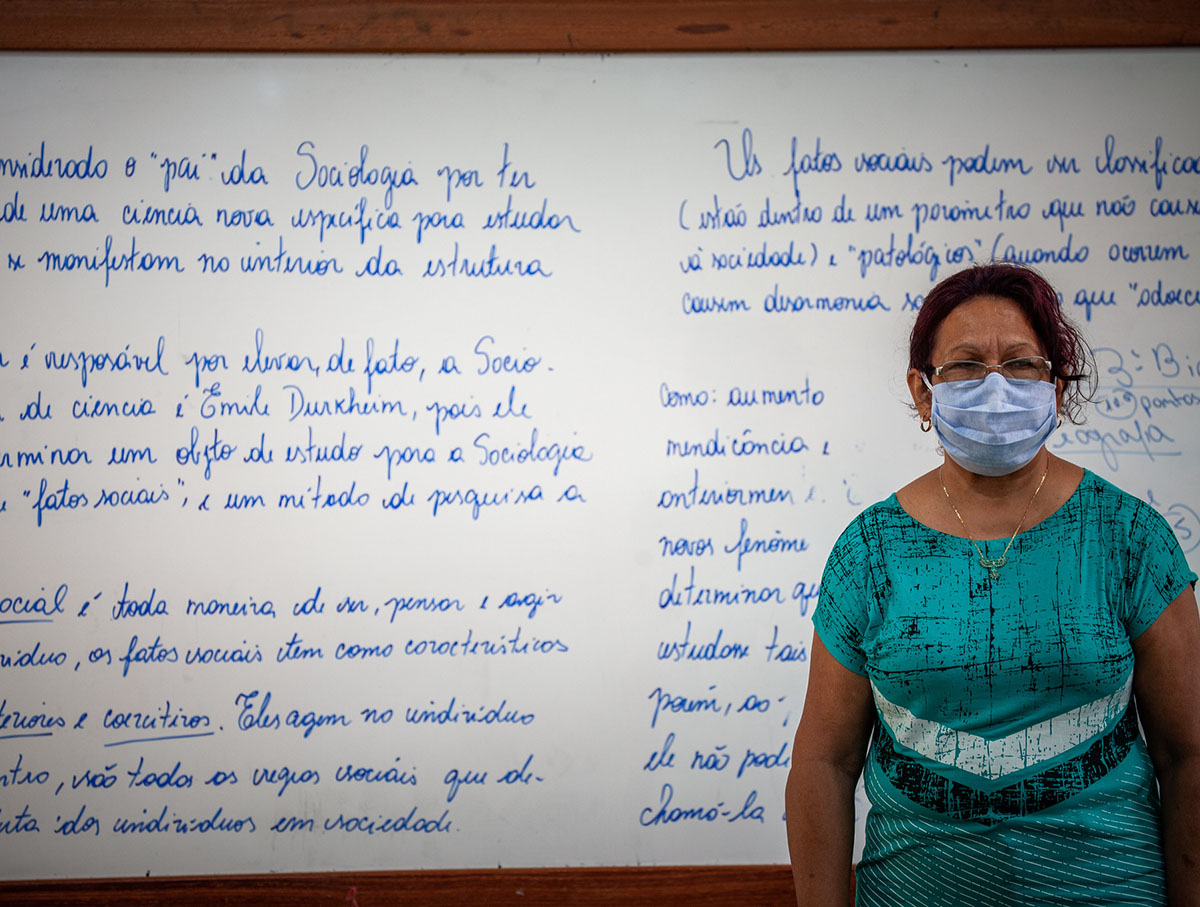“We need to make sure that gender dimensions are factored right into the design of efforts to support COVID-19 recovery.” - Masood Ahmed, president of the Center for Global Development
Since the start of the pandemic, researchers across CGD have worked to inform COVID-19 response efforts—looking not only at the direct health effects of COVID-19, but also at the indirect effects on schooling and learning, income, mobility, and more.
Now, the Center for Global Development is building on our initial efforts by launching the COVID-19 Gender and Development Initiative. This new initiative will aim to promote gender equality and long-term prosperity in low- and middle-income countries by informing global and national decisionmakers' policy responses to the current pandemic and future crises.
The goals of this new project are to increase both the importance of gender equality on the development policy agendas of decisionmakers in COVID-19 response and recovery, and the use of rigorous gender equality evidence and policy analysis by these decisionmakers.
As part of this work, a team of us will seek to fill gaps in understanding of the COVID crisis’ gendered impacts and needed policy responses. Top of mind in our work will be the following considerations:
- Those who already faced disproportionate barriers pre-COVID are most likely most vulnerable to the shocks of the pandemic. For example, unlike in past crises, where we've seen male-dominated sectors contract the most leading to mass unemployment, now we're seeing that women's employment and business operations are most impacted (see here, here, and here).
- Where we are seeing consideration of COVID’s gendered impacts, a lot of the conversation is still centered on high-income and formal workforce settings—places where good data are easier to come by. CGD is seeking to address that gap by concentrating on low- and middle-income countries, and especially where the impacts felt by women and girls living in poverty diverge from what's reflected in the mainstream narrative.
- COVID has not just brought a short-term health crisis, but a longer-term economic one. We need to look beyond direct health effects and short-term relief measures to make sure gender is considered in longer-term recovery policies.
While there’s still a lot of research and analysis to be done on how women have fared during COVID-19 (you can sign up for updates here), what we know is that policymakers across the globe have a real opportunity to pursue an inclusive recovery—one that makes gender equality core to building back better—and we applaud multilateral institutions for beginning to seize on this opportunity.
Policymakers across the globe have a real opportunity to pursue an inclusive recovery.
At an event hosted by CGD on January 19, 2021 we heard about some of these initial efforts (if you missed it, you can watch it here):
- Caridad Araujo, division chief for gender and diversity at the Inter-American Development Bank, highlighted the bank’s efforts to integrate gender in its COVID-19 response, including its focus to “make sure that reproductive health services aren't underfunded or neglected during the pandemic and equip health systems to screen and respond to gender-based violence.”
- Caren Grown, global gender director at the World Bank Group, highlighted the bank’s work in the social protection space, providing not just cash transfers but also other forms of support, such as childcare subsidies. She highlighted the bank’s efforts during COVID-19 to strengthen and expand social registries to include vulnerable segments of the population, ensuring that gaps in official data don’t exacerbate exclusion and inequality.
- Keiko Nowacka, senior social development specialist at the Asian Development Bank, discussed how gender was incorporated into the bank’s economic empowerment work during COVID, mentioning how, in countries where budget support for entrepreneurship existed, “the ADB would set a gender target based on the national baseline, so for example in Tajikistan 40 percent of support to small and medium enterprises was earmarked for women.”
But there is still more work to do to integrate gender into COVID recovery responses. Decisions must be based on quality data—which means data inclusive of those demographic groups most in need of support. As CGD senior fellow Mayra Buvinic stated during the launch event, the most important part of measuring how policies and projects impact women is “the building of results frameworks that are gender informed with the right indicators, and there's where I think a lot of work still needs to be done."
To learn more about this new initiative and how to get involved:
CGD blog posts reflect the views of the authors, drawing on prior research and experience in their areas of expertise.
CGD is a nonpartisan, independent organization and does not take institutional positions.






